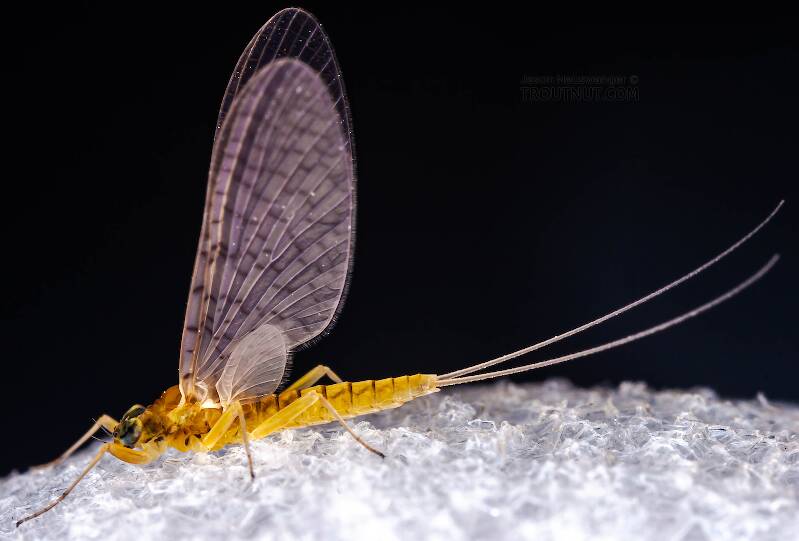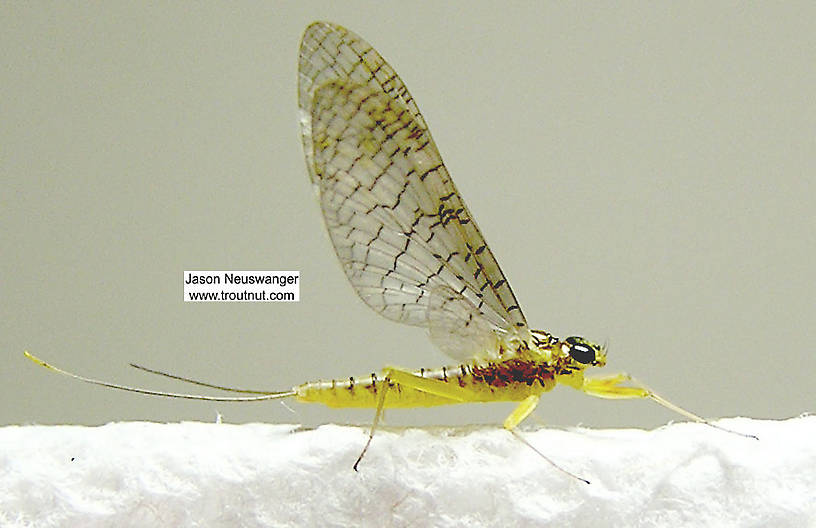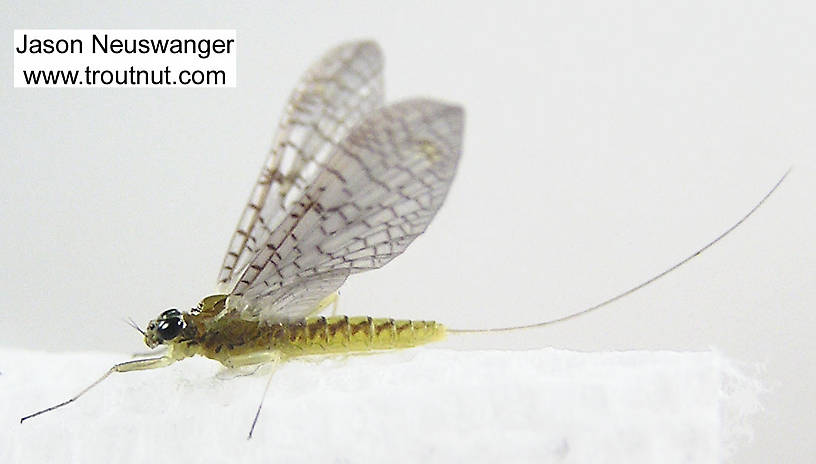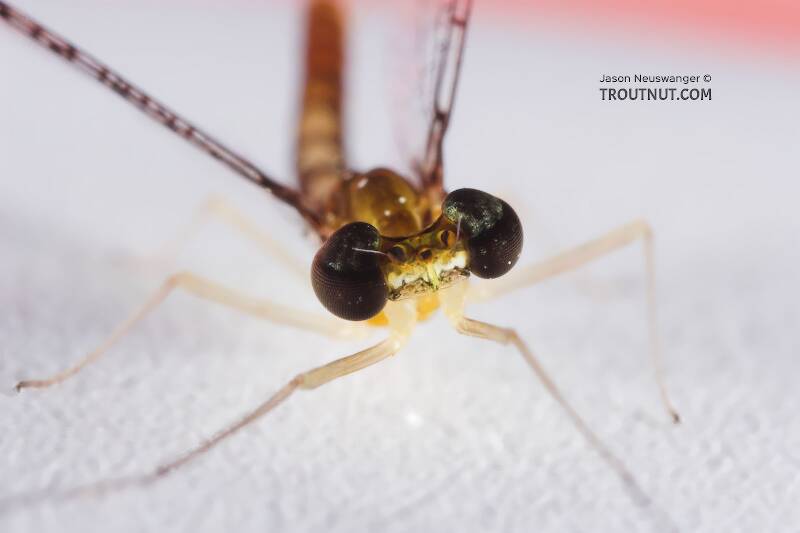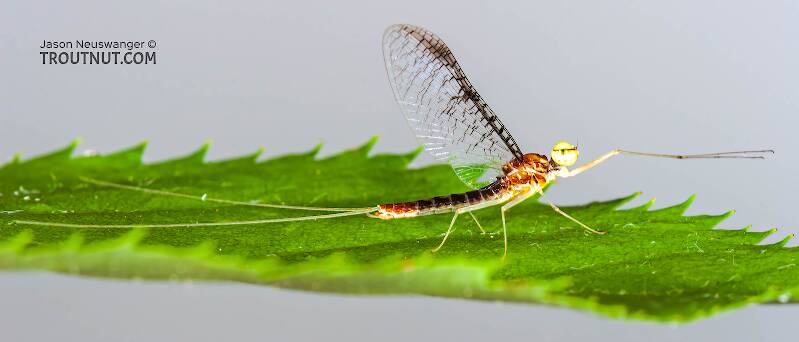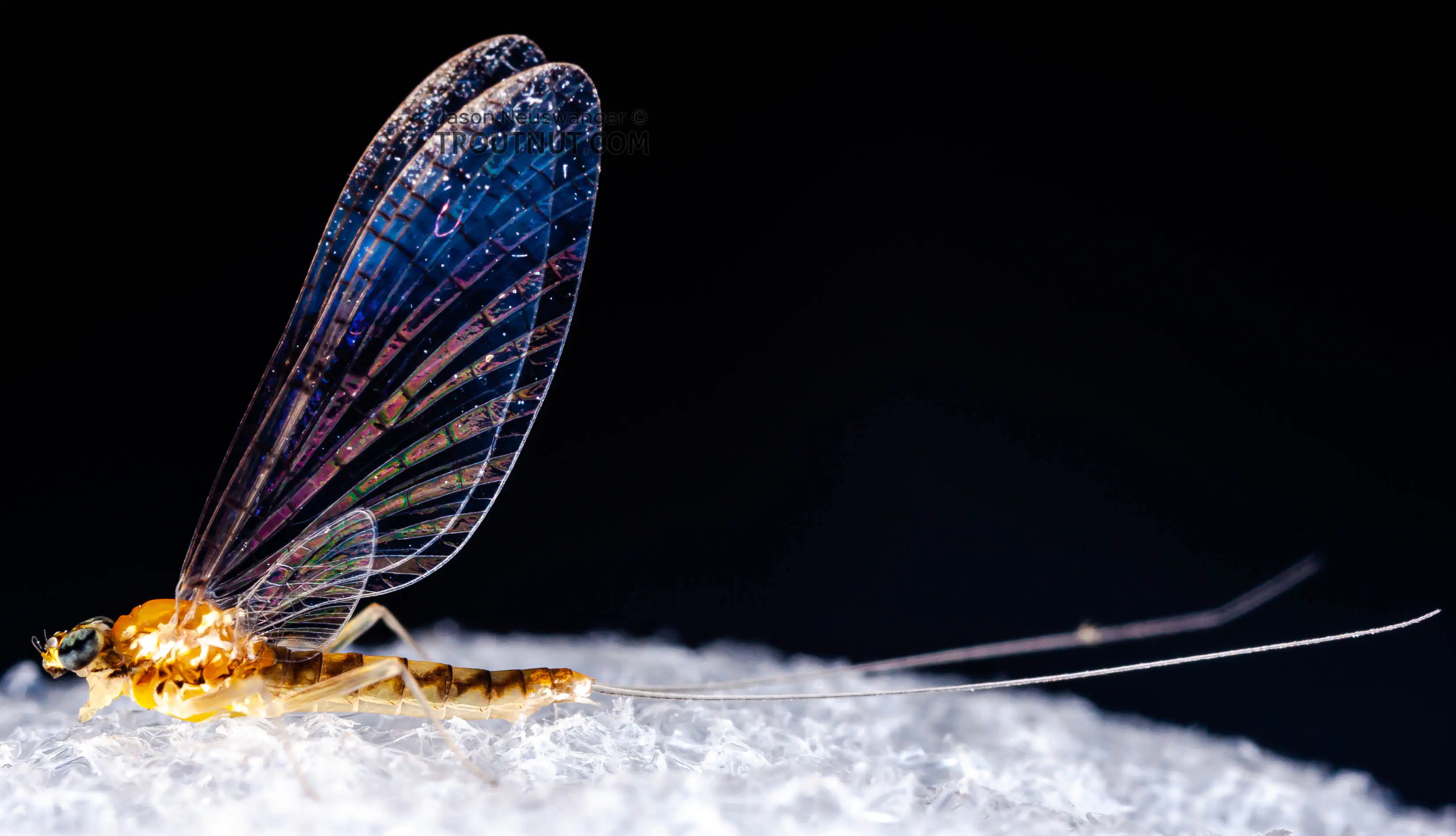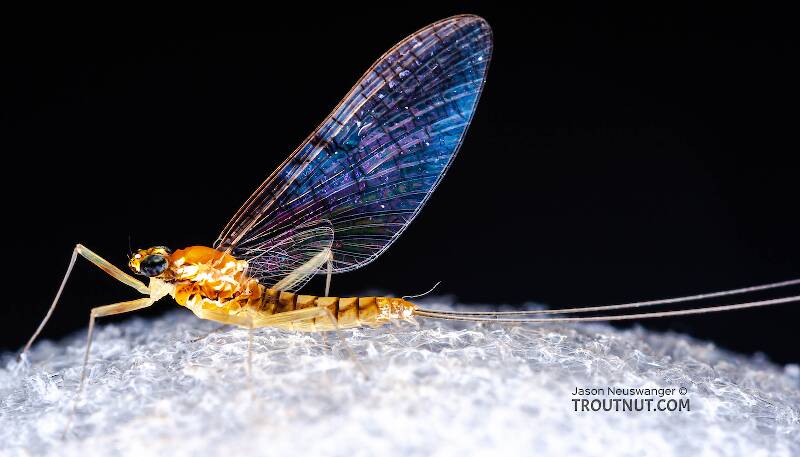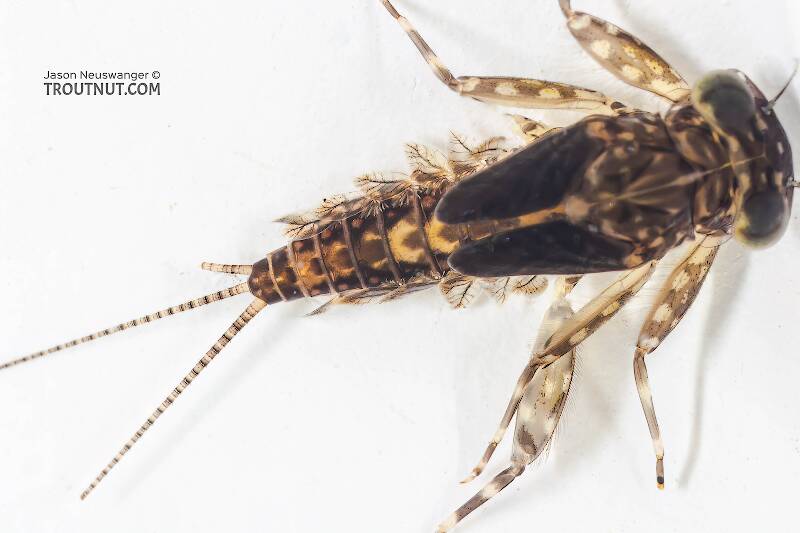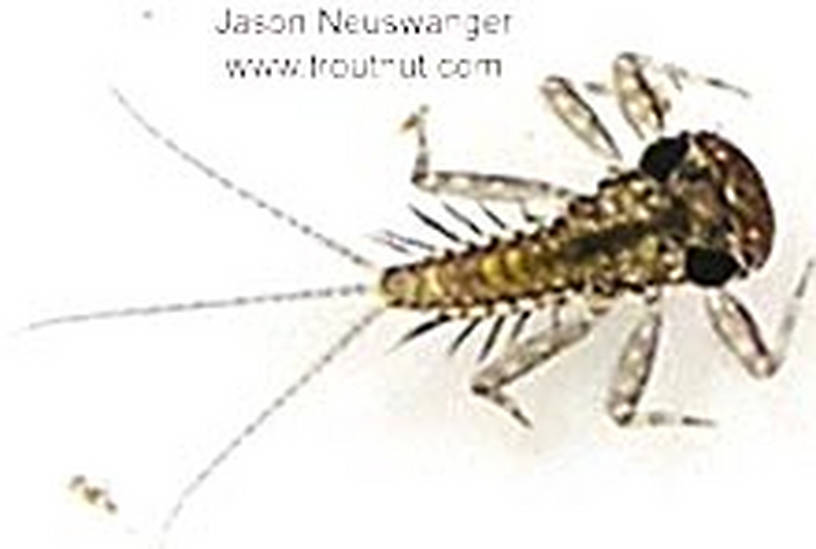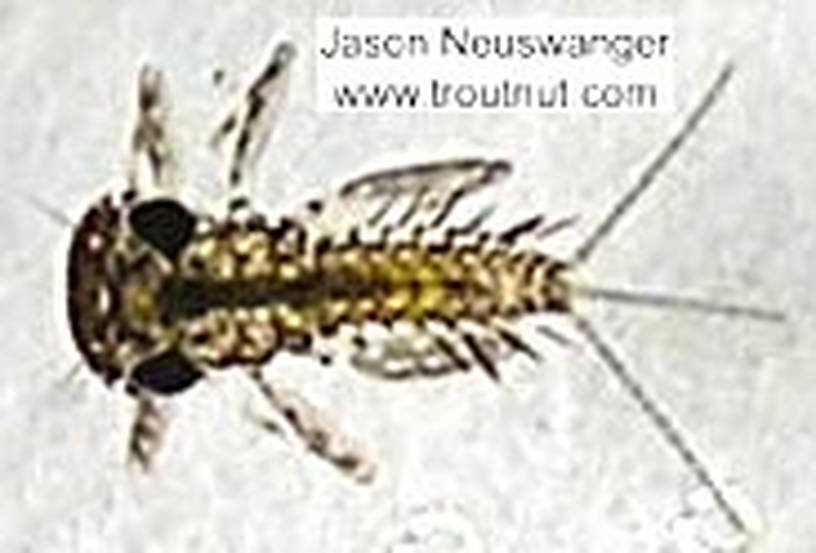
Blue-winged Olives
Baetis
Tiny Baetis mayflies are perhaps the most commonly encountered and imitated by anglers on all American trout streams due to their great abundance, widespread distribution, and trout-friendly emergence habits.


Mayfly Species Leucrocuta hebe (Little Yellow Quills)
Where & when
The best hatches are reported from the Upper Midwest.In 83 records from GBIF, adults of this species have mostly been collected during June (30%), July (30%), August (24%), and May (7%).
In 15 records from GBIF, this species has been collected at elevations ranging from 3 to 6135 ft, with an average (median) of 614 ft.
Species Range
Hatching behavior
The duns emerge and fly away very quickly, making them usually pointless to imitate. Spinners are more likely to be relevant.Physical description
Most physical descriptions on Troutnut are direct or slightly edited quotes from the original scientific sources describing or updating the species, although there may be errors in copying them to this website. Such descriptions aren't always definitive, because species often turn out to be more variable than the original describers observed. In some cases, only a single specimen was described! However, they are useful starting points.
Male Spinner
Wing length: 7 mm
Mesonotum olive brown; cross veins of costal margin and some in disc of wing distinctly margined with dark brown; tergites largely deep brown, paler dorsally; genitalia of the maculipennis type (now a synonym of Leucrocuta maculipennis) (see fig. 97).
Frontal portion of head pale yellow; a dark streak along base of frontal shelf. Vertex deep brown, posterior margin darker. Antennal filament dusky at base, tip pale. Pronotum yellowish in median area, shaded heavily with blackish laterally, and with two short black lateral stripes. Mesonotum olive-brown, with slight ochreous shading; metanotum dark red-brown, with two dark transverse streaks near center. Pleura light yellow; a broad brownish lateral stripe above the bases of the legs. Sternum light yellow. Fore coxae and bases of femora yellowish; femora pale brownish apically, with a dark streak near apex on ventral edge; tibiae often yellowish basally, pale brown apically, tip darker brown; tarsi pale brown. Wings hyaline; costal border tinged with brown. Cross veins of the costal and subcostal spaces quite heavily margined with dark brown, especially before the bulla; at the bulla, several cross veins in the first 7 or 8 spaces are slightly margined, and at the fork of the posterior branch of the radial sector is a small brown cloud. Other cross veins of the disc more or less margined; all cross veins of fore wing dark brown, heavier than the paler brown longitudinal veins. 5 to 6 costal cross veins before bulla, about 12 beyond it.
Abdominal tergites deep brown, the dorsal portions of 4-6 semihyaline whitish, often also base of 7; pale submedian streaks on other tergites; lateral margins pale smoky, on 2-7. Tergites 8-10 opaque, reddish brown, lateral margins yellowish. Sternites pale yellowish, 8 and 9 opaque. Forceps and tails pale yellowish. Penes of the maculipennis. Innermost pair of spines longer than in any other species of this group.
The dark abdominal tergites and the longer spines on the penes separate this species from others of the maculipennis group. It is probably most nearly allied to H. aphrodite (now a synonym of Leucrocuta aphrodite).
Specimens of the Mayfly Species Leucrocuta hebe
3 Female Duns
2 Male Spinners
2 Female Spinners
4 Nymphs
Start a Discussion of Leucrocuta hebe
References
- Arbona, Fred Jr. 1989. Mayflies, the Angler, and the Trout. Nick Lyons Books.
- Caucci, Al and Nastasi, Bob. 2004. Hatches II. The Lyons Press.
- Knopp, Malcolm and Robert Cormier. 1997. Mayflies: An Angler's Study of Trout Water Ephemeroptera . The Lyons Press.
- Leonard, Justin W. and Fannie A. Leonard. 1962. Mayflies of Michigan Trout Streams. Cranbrook Institute of Science.
- Needham, James G., Jay R. Traver, and Yin-Chi Hsu. 1935. The Biology of Mayflies. Comstock Publishing Company, Inc.
Mayfly Species Leucrocuta hebe (Little Yellow Quills)
Species Range
Common Names
Resources
- NatureServe
- Integrated Taxonomic Information System
- Global Biodiversity Information Facility
- Described by McDunnough (1924)


